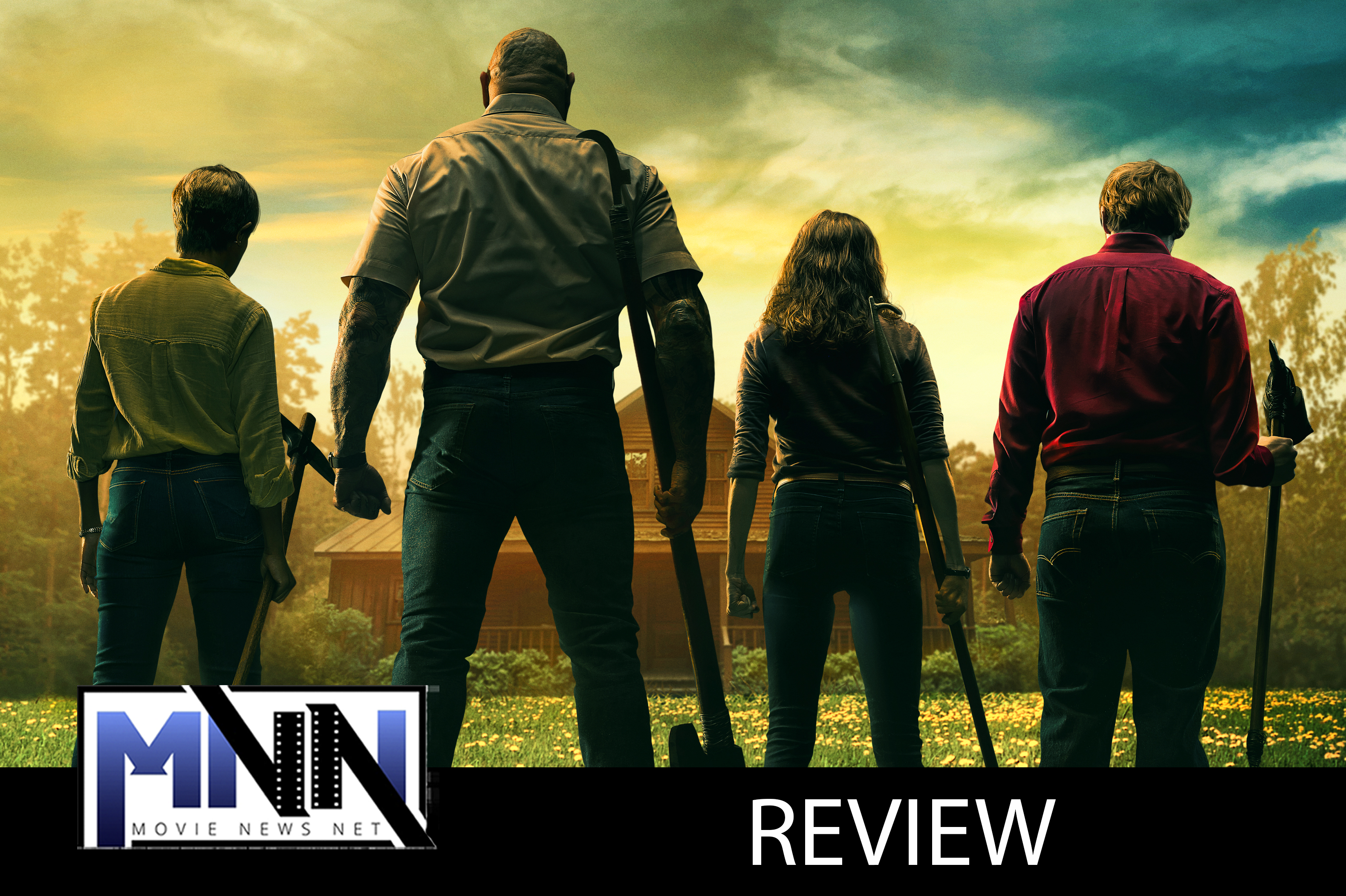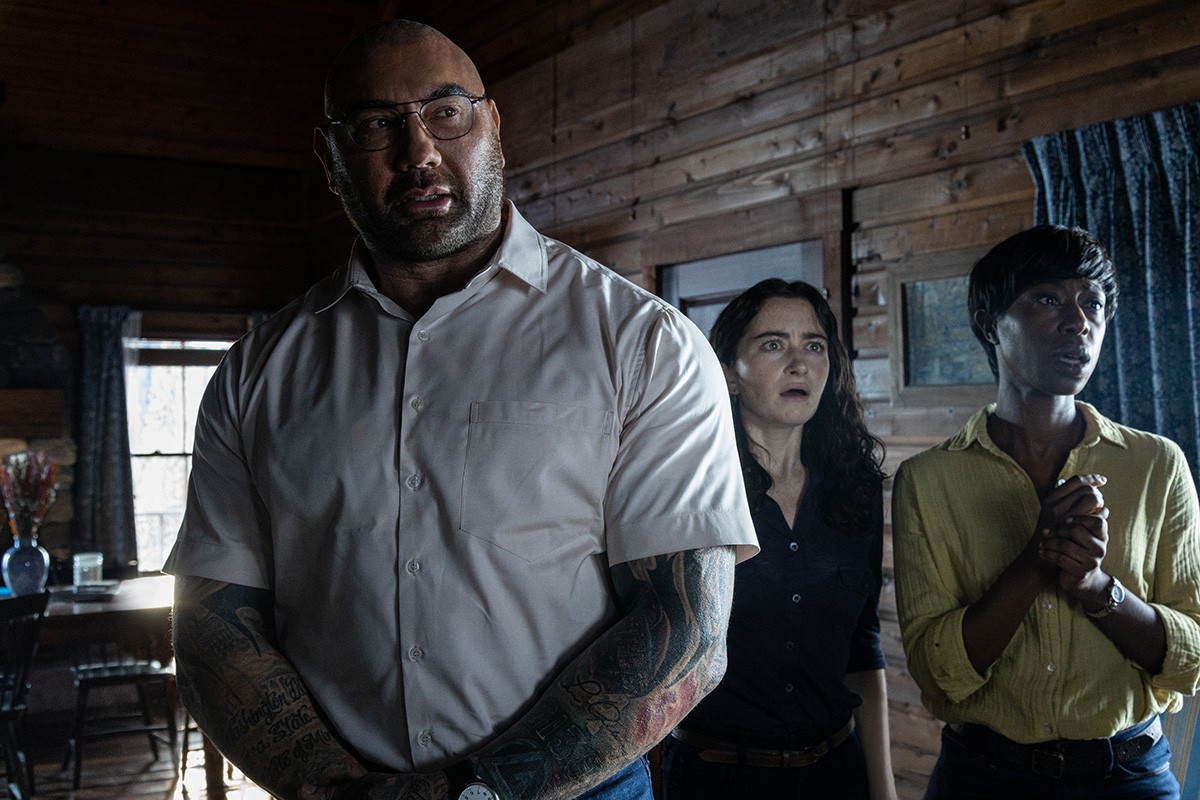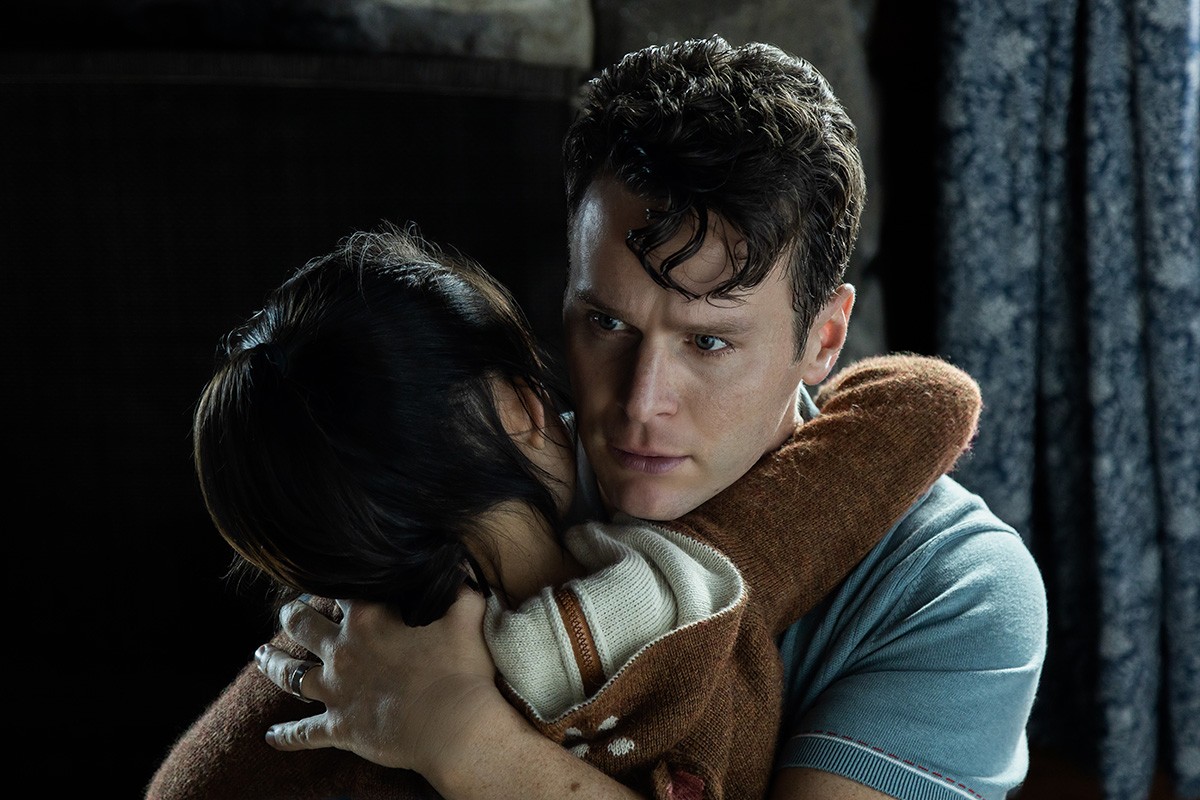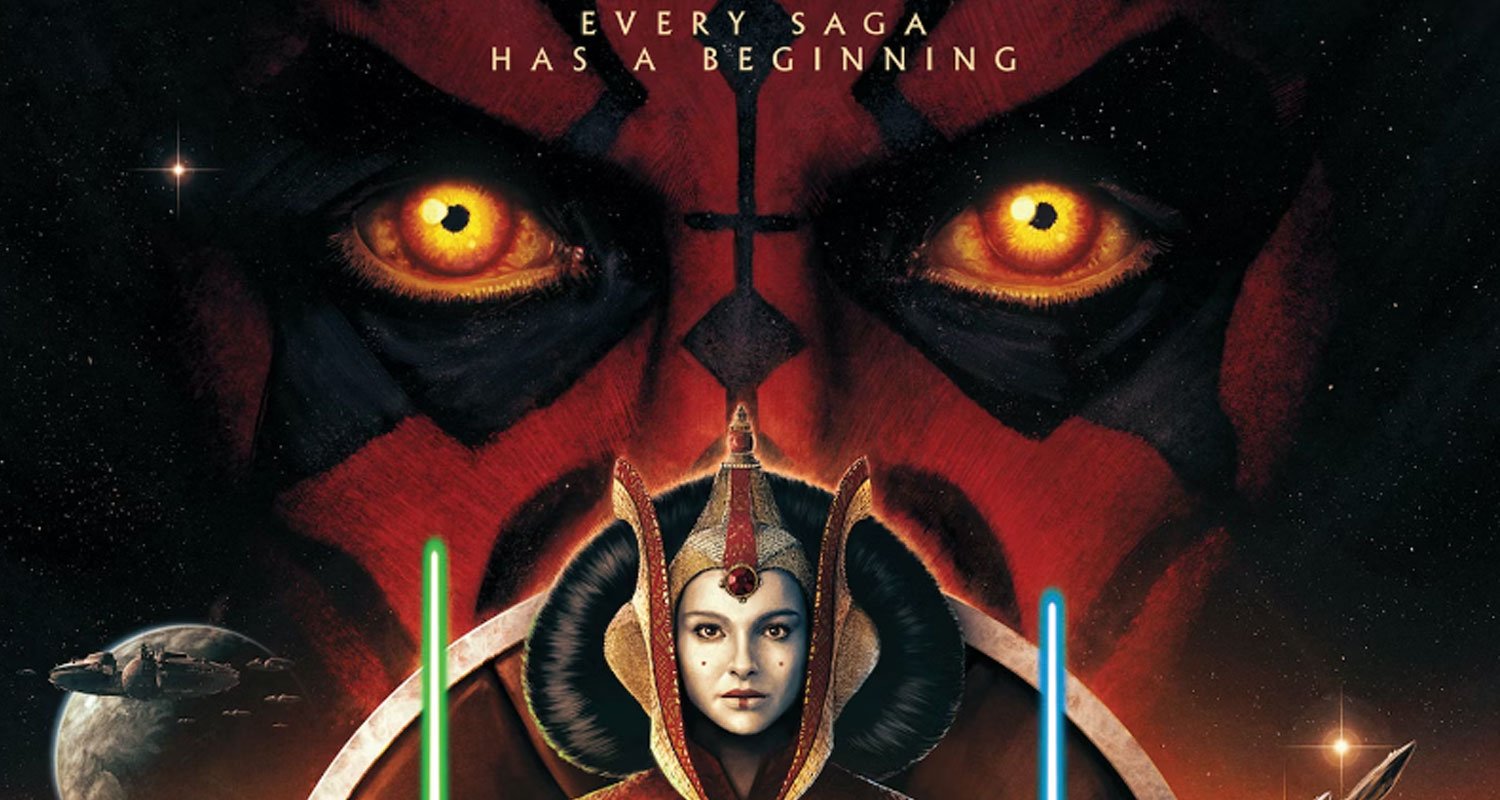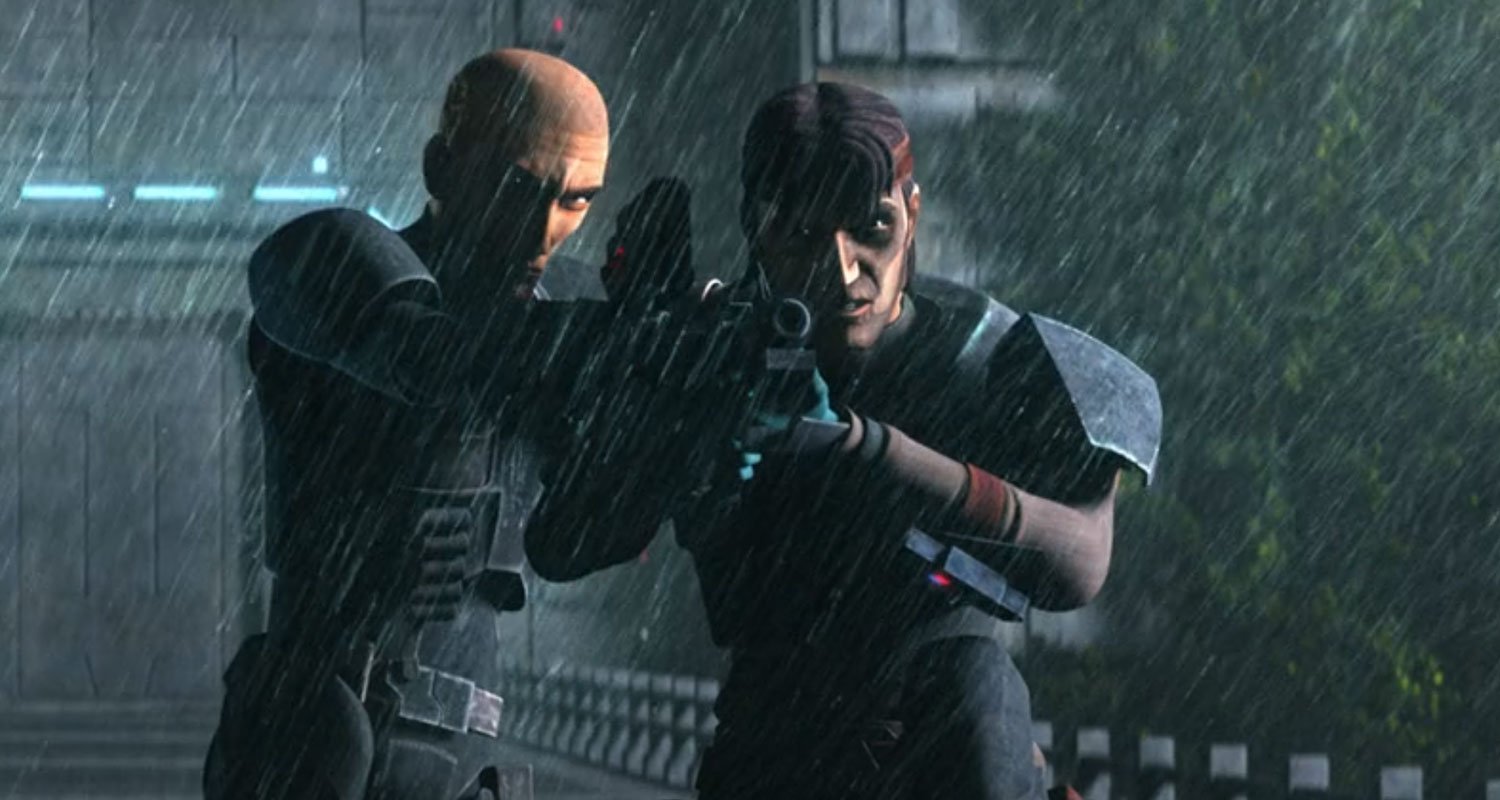‘Knock at the Cabin’ Review: Shyamalan’s Direction Can’t Salvage a Shallow Thriller
It is undeniable that M. Night Shyamalan is one of Hollywood’s most unique voices and definitely one of the most interesting careers to study throughout the years. His highs have been higher than most, and his lows have been lower than most, and over the past few years, he’s been bouncing back and forth on that spectrum. Knock at the Cabin, his latest effort, feels like definitive proof that he’s stuck in the middle, delivering solid but ultimately forgettable entertainment.
Mild spoilers ahead…
He took on directing and co-writing duties this time around, and shared them with Steve Desmond and Michael Sherman to tell a unique take on the end-of-the-world genre tinted with (not-so-subtle) biblical allegories. Jonathan Groff (Mindhunter) and Ben Aldridge (Pennyworth) play Eric and Andrew, a young gay couple having a few days off in a cabin in the middle-of-nowhere, Pennsylvania, with their adoptive eight-year-old daughter Wen (Kristen Cui in her feature debut). Four strangers start knocking on the door with the scariest of proposals: they claim the end of the world is near and the only way to stop it is for the three of them to decide on one family member to sacrifice. Grave consequences await them all if they don’t make a decision.
These four horsemen of the apocalypse are Dave Bautista’s Leonard, a middle-school teacher, Nikki Amuka-Bird’s Sabrina, a young nurse, Abby Quinn’s Adriane, a young cook, and Rupert Grint’s Redmond, a man with a troubled past trying to live a better life. Perhaps the biggest problem with the story of Knock at the Cabin, adapted from Paul Tremblay’s novel The Cabin at the End of the World, is the main question that concerns Eric and Andrew. Throughout its (otherwise effective) sub-100-minute runtime, the four strangers must convince them what they are telling them is real and not a case of collective psychosis, a theory that starts to gain more ground as the plot starts to thicken.
That makes for a solid but ultimately shallow plot that is stretched too thin by the end. The writing team did a decent job trying to keep the audience guessing whether or not what they are telling is true, and one of the biggest advantages they had is Shyamalan’s track record of introducing twists at the end of his films, something that will make audience members in the know think twice about what they are seeing. Unfortunately, there is a lot of untapped potential here. Instead of focusing on answering that question throughout two-and-a-half acts, a more compelling narrative would have resolved it by the halfway point of the film, having the characters debate what to do once they’ve decided they hold the key to saving the world, and that it involves tearing their family apart.
Through the use of flashbacks and subtle but effective signs of love and affection, Shyamalan started to introduce the idea of “us against the world” from the couple’s perspective. After years of dealing with physical and emotional rejection by most people surrounding them, they decided they would walk this Earth by themselves if they had to before splitting apart. But that was before they realized they would actually have to follow through on that (the deal presented by the four strangers includes that, should the apocalypse happen, they would be the only three survivors). The heart of the film lies in the themes of family and the lengths you would go to protect them, yet none of that was really explored by the narrative.
The film’s biggest success, though, is the technical achievements that Shyamalan was able to pull off from behind the camera. From seemingly impossible camera movements that play with the structure of the cabin and takes that go on longer than anyone would have predicted, to provoking and even claustrophobic framings, to one of the best uses of focus in recent memory, Shyamalan was at his best while on set. Moreover, Dave Bautista might have delivered his best performance to date — in an unexpected and definitely questionable move, we end up knowing more about the four strangers that knock at the cabin than about the three people they are visiting. Towards the third act, we start to learn more about Eric and Andrew separately (up until that point, everything we knew about them was based on their dynamic as a couple), but surprisingly, our biggest emotional connection was to the four strangers (which the script does require in order to work).
All in all, Knock at the Cabin is a movie that lives and dies on its premise. It is a straightforward execution of a two-line pitch that will keep you entertained for the film’s appropriate runtime, but could have been much better had it explored the emotion and the real weight behind it, rather than focusing on the thriller aspect of it. It is the film’s best quality, along with the technical achievements of its director, but also its doom when the script fails to move past it. To my surprise, it was Ben Aldridge’s performance that stuck out the most out of the couple, despite my familiarity with Jonathan Groff’s work, while Dave Bautista and Abby Quinn were the two that shined the brightest from the four strangers. The former wrestler is on a quest to gain the trust and respect of his peers, and this is definitely a big step forward in that direction.
Knock at the Cabin is currently available to watch in movie theaters across the world.
Miguel Fernández is a Spanish student that has movies as his second passion in life. His favorite movie of all time is The Lord of the Rings, but he is also a huge Star Wars fan. However, fantasy movies are not his only cup of tea, as authors like Scorsese, Fincher, Kubrick or Hitchcock have been an obsession for him since he started to understand the language of filmmaking. He is that guy who will watch a black and white movie, just because it is in black and white.

